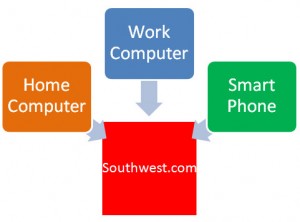Unique Visitor Statistics are NOT an SEO KPI for Most Businesses
To call the EverEffect Web Analytic team data geeks would be a lie, we are super geeks. We spend the majority of our day looking at some of the most granular data sets we can get our hands on in hopes of finding golden nuggets that will either increase our clients’ profits or decrease their costs. We also understand there is a margin of error to all web analytics but the one set of metrics we typically stay away from is unique visitor statistics. While most analytic packages provide information on daily, weekly and monthly unique visitors, these metrics should be handled carefully or not at all.
Here are some of the main reasons why unique visitor statistics can make you dangerous:
Duplication by the Analytics Software
While there are variations on how analytic software packages track unique visitors, there is a common duplication that occurs. If I visit your website today for the first time, I am counted as a daily unique visitor. If I visit it tomorrow (a new day) I am counted as a daily unique visitor (again). If you were to run a daily unique visitor report for the month; it will show that you had two unique daily visits. Why, because I visited your website on separate days; therefore, the report counts me once for each new day I visited your website. Imagine this compounded over the course of a month; can you see how the daily unique visitor data is grossly inflated? A similar issue occurs with the data for weekly unique visitors and monthly unique visitors.
Duplication by the User
I took a trip to visit family out of state which required me to purchase a plane ticket. I ended up going with Southwest airlines but the purchase decision was made over a week’s time period. During that week I checked ticket prices from my home computer, work computer (sorry EverEffect) and from my phone.
As seen in the graphic I visited the Southwest website from three different sources and each time I will be recorded as a unique visitor. Consumers are now visiting websites from more than one source which helps skew unique visitor data because each time they visit from a different source they are counted as a new unique visitor.
Cookie Tracking Issues
While there is a debate on exact percentages (5-33%), tracking cookies can be deleted, blocked and lost. Have you cleared your browsing history recently? If you answered “yes” then you have likely cleared your cookies as well. If the cookie is deleted, blocked or lost; your analytic software will assign a new cookie and identify that user as a new unique visitor. This is just another way in which duplication occurs.
As seen in the examples above the biggest issue with using unique visitors as a KPI metric is the vast amount of duplication that occurs. Even if you use the absolute unique visitor report in Google Analytics, which eliminates the Duplication by the Analytics Software problem discussed above, the other problems remain. These issues compound the margin of error and decrease our confidence levels in that data which prevents us from drawing any reasonable conclusions from daily, weekly and monthly unique visitor numbers.


